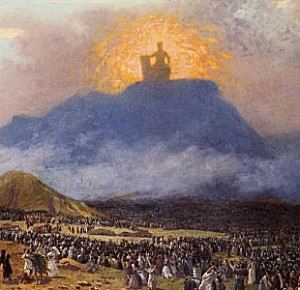A Meditative Journey on the 5 Big Bangs
Listen to this 15 minute meditation on the 5 Big Bangs and the Evolution of Love, excerpted from the course, Awakening Your Unique Self, by Dr. Marc Gafni.
Barbara Rosson created the slide show with pictures and music. Here is what she wrote us:
When I did the AYUS transcription, I started seeing things.
Here’s a glimse of what I saw…
Watching it still makes me cry for joy, even after seeing it over and over and over!
Enjoy!

 By Marc Gafni
By Marc Gafni Implications: A Great Voice Which Does Not Cease
Implications: A Great Voice Which Does Not Cease By
By  The First Stage: The Silence of Absence
The First Stage: The Silence of Absence “As the Kabbalists point out, the word Moses spelled backwards is Ha Shem, meaning ‘the name.’ Importantly, Ha-shem in biblical Hebrew also is the most common reference to God’s name. When you respond to your call and realize your soul print, fully becoming your name, you become one with God. When Moses did this, he found his voice, he became a prophet.”
“As the Kabbalists point out, the word Moses spelled backwards is Ha Shem, meaning ‘the name.’ Importantly, Ha-shem in biblical Hebrew also is the most common reference to God’s name. When you respond to your call and realize your soul print, fully becoming your name, you become one with God. When Moses did this, he found his voice, he became a prophet.” How do our unique perspectives of the world color our relationship with beauty, creativity, and transcendence? Join Alex Grey, Diane Musho Hamilton, and Dr. Marc Gafni for a cutting-edge dialogue on Creativity and Unique Self.
How do our unique perspectives of the world color our relationship with beauty, creativity, and transcendence? Join Alex Grey, Diane Musho Hamilton, and Dr. Marc Gafni for a cutting-edge dialogue on Creativity and Unique Self.